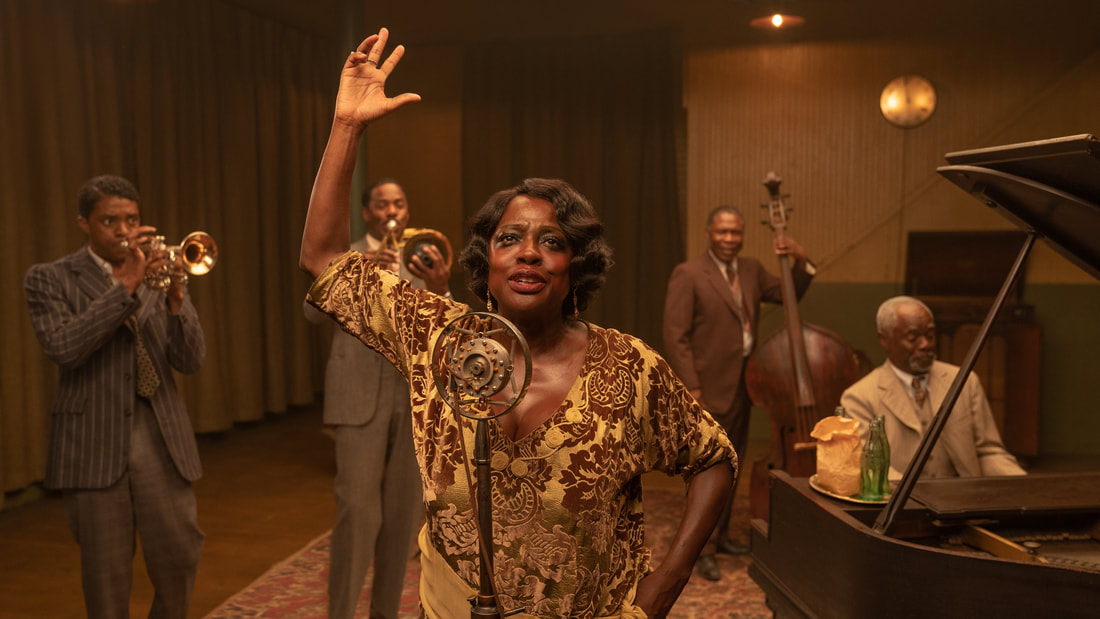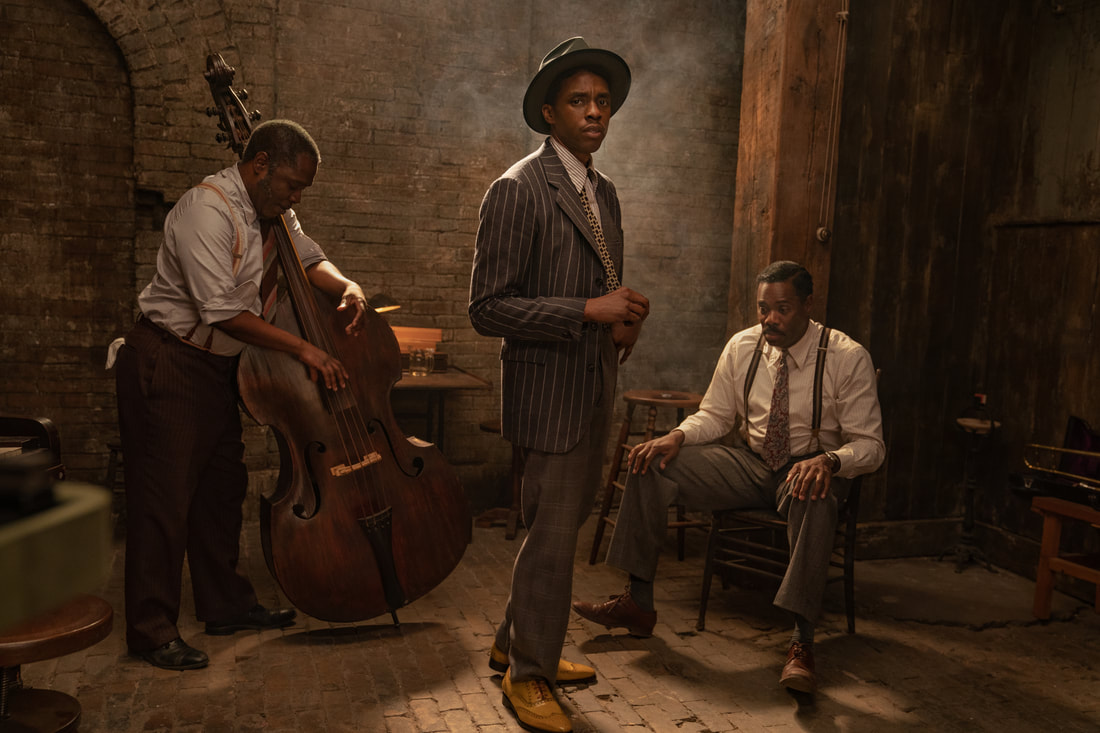|
Review by Sean Boelman
It may come as a shock to theater fans to find out that Ma Rainey’s Black Bottom is somehow only the third screen adaptation of one of acclaimed playwright August Wilson’s plays. Thankfully, director George C. Wolfe and screenwriter Ruben Santiago-Hudson know what to do with Wilson’s distinctive style, allowing them to translate the magic of his writing to the screen.
Set in the 1920s, the film takes place over the course of a recording session in which tensions flare up between a blues singer diva, the ambitious trumpet player in her band, and the white management of the studio. Like much of Wilson’s work, this takes the guise of a simple and straightforward story with racial issues happening in the background, only for a hugely symbolic moment in the third act to bring everything together. Wolfe does some really unique things with the execution of the movie. Of course, the use of music is wonderful and serves as an integral part of the narrative, but even more intriguing is the way in which he uses the space of the recording studio. It is neither confining nor expansive, rather creating this purgatory between the world inside and outside of the studio, which is fascinating. Glimpses of the themes of racial inequality can be seen throughout, like in an early encounter with the police or a scene in which some of the band members go into a white deli, but what makes these moments so interesting is that they are played for laughs. There is an odd sense of humor to most of the first two thirds, and it works.
It is in the final moments that the dramatic portions of the narrative come to a head, and it will be absolutely shocking, regardless of whether or not one is familiar with the source material. One of the things that makes Wilson’s stories so powerful is that, even though they are written in different eras, they still resonate today.
This film’s origins on the stage are obvious, as there is a focus on dialogue above everything else, but the dialogue is so sharp that it provides a very natural pacing. Additionally, the monologues that the main characters have are absolutely captivating, partially because of their poeticsm, but also because of their performances. Chadwick Boseman and Viola Davis are both at their best as co-leads. As the eponymous musician, Davis steals the show every time she is on screen (even though heavy make-up can be distracting at times), bringing a particular charisma to the character that feels like it was ripped from the stage. Boseman, on the other hand, is much more subtle with his turn, focusing on the quietly emotional aspects of the role. Ma Rainey’s Black Bottom is a bit rough around the edges, but those familiar with Wilson’s work will know that this is a lot of what makes the playwright’s words so effective. Featuring some of the best performances of the year, this is one of the best stage-to-screen adaptations in recent memory. Ma Rainey’s Black Bottom streams on Netflix beginning December 18. Rating: 4/5
0 Comments
Leave a Reply. |
Archives
July 2024
Authors
All
|
|
|
disappointment media
Dedicated to unique and diverse perspectives on cinema! |


